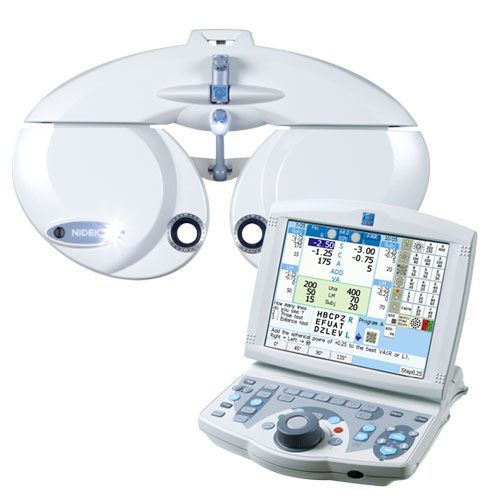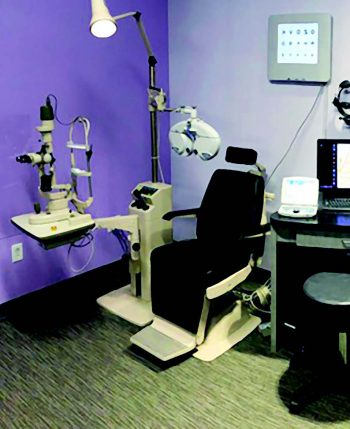
I first had the opportunity to use Marco autorefractors in the 1990s while serving in the U.S. Army at Fort Jackson, SC. There, I witnessed firsthand how Marco’s technology helped us swiftly and efficiently process the eyecare needs of 100 or more troops on any given day. I also appreciated the ability to transmit data directly to the lab with no need for data entry or writing out prescriptions. Having experienced the benefits of this technology, I knew that I would want the same technology in my own practice one day.
Technology I Can Trust
After completing my 3-year commitment to the Army, I moved to San Antonio and began looking for practice opportunities. I purchased my practice, Stone Oak Vision Source, in 2004 and began outfitting it with Marco’s automated technology as quickly as I could.
I started Stone Oak with one associate; we now have three associates and a staff of 20. We expect to gross more than $3 million this year. To this day, we still run an ARK-1 autorefractor and LM-1200 lensometer in our primary prescreening room, and an AR-510A autorefractor and an LM-1000 lensometer in our secondary prescreening room. Exam rooms 1, 2, and 3 each have an older generation RT-900 autorefractor, while exam room 4 has an RT-2100 autorefractor and exam room 5 has the latest TRS-5100 digital autorefractor that we acquired when we moved into our new building in 2016. Marco technology is clearly a part of the fabric of this practice.
Quick and Accurate
Today, just as when I was in the Army, one of the things I appreciate most about Marco’s technology is how easy it is to quickly and accurately transfer autorefraction and lensometry data. Indeed, I have no doubt this reduces prescription mistakes and remakes. The autorefractors and the lensometers seamlessly network into our phoropters and ExamWRITER software. We use the new manifest-to-old-Rx toggle feature at the end of the refraction to show our patients the difference between their new prescription and their old one. This allows them to more accurately appreciate the change they will see in ways they can understand.
In addition, the ability to transmit data with the touch of a button is a huge time-saver. Anything that can help improve accuracy and efficiency in our clinic is a win for us. In fact, spending less time on data entry and the refraction process as a whole gives us more time to discuss each patient’s condition and the solutions we can offer. For example, it’s easier to get patients on board with multiple pairs of eyeglasses when our doctors have enough time to discuss how each one will meet specific needs, and when patients are able to quickly assess the Rx differences themselves.
The “Wow” Factor
The technology is also a “wow” factor for our patients; they appreciate that our office doesn’t have the same old equipment they’ve seen for decades in other offices. We offer high-tech lenses and diagnostic options throughout our clinic. Performing examinations with anything less than state-of-the-art equipment simply wouldn’t correspond with our mission to deliver high-tech, cutting-edge service.
As fond as I am of our older RT-900s, I am looking to upgrade them to TRS-5100 digital refractors this year. They have served us well these past 14 years, so it almost pains me to let them go. Still, I know exactly where to turn to receive the same high-quality technology that I’ve come to trust for so many years.
– Monica Allison, OD, MBA, FIAO


